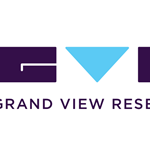Healthcare has entered a new era, powered by artificial intelligence and machine learning. From predictive diagnostics to personalized treatment plans, ML-based healthcare apps are transforming how medical professionals deliver care and how patients manage their health. But for businesses and startups aiming to enter this space, one pressing question often arises: how much does it cost to develop an ML-powered healthcare app?
In this blog, we’ll explore the key factors influencing development costs, the features that matter most, and how to optimize your investment while ensuring a high-quality product.
Why ML-Based Healthcare Apps Are in Demand
The healthcare industry has always faced challenges like data overload, delayed diagnoses, and fragmented patient management. Machine learning addresses these problems by:
-
Predicting health risks: AI algorithms can identify potential health issues before they become critical.
-
Personalizing care: ML analyzes patient data to provide tailored treatment plans.
-
Streamlining operations: Automating administrative tasks reduces human error and increases efficiency.
-
Enhancing patient engagement: Chatbots, reminders, and health tracking empower patients to take charge of their health.
With these benefits, the demand for ML-driven healthcare solutions is skyrocketing, making app development in this sector a smart investment.
Key Factors Influencing Cost
Developing a healthcare app with ML capabilities is more complex than building a standard mobile app. Here’s what impacts the cost most:
1. Type of Healthcare App
Your app’s purpose affects its complexity and cost. Common types include:
-
Patient-focused apps: Track symptoms, medication, appointments, and provide health insights.
-
Doctor-focused apps: Enable remote monitoring, teleconsultation, and access to predictive analytics.
-
Hospital management systems: Automate patient records, staff management, and operational workflows.
-
Diagnostic tools: Use ML to interpret scans, lab results, and predict conditions.
The broader the scope and functionality, the higher the development cost.
2. Core Features
A well-rounded ML-based healthcare app typically includes:
-
Patient registration and profiles
-
Appointment scheduling
-
Electronic Health Records (EHR) integration
-
Symptom checker with AI-powered predictions
-
Wearable device integration for real-time health monitoring
-
Telemedicine and video consultations
-
AI chatbots for patient engagement and support
-
Data analytics dashboards for medical professionals
Advanced features, such as predictive analytics or image recognition for diagnostics, significantly increase development complexity and cost.
3. Machine Learning Model Development
The heart of the app is the ML model. You can either:
-
Use pre-trained models: Quick to deploy and cost-effective, but with limited customization.
-
Build custom models: Tailored to your specific healthcare use case, but requires extensive data collection, preprocessing, training, and testing.
Developing a sophisticated ML model may require a team of data scientists, developers, and healthcare specialists, which can substantially increase costs.
4. Technology Stack
The tech stack you choose affects scalability, performance, and budget:
-
Frontend: Flutter, React Native, or native development for iOS/Android
-
Backend: Python (Django, Flask), Node.js, or Java
-
ML frameworks: TensorFlow, PyTorch, or Scikit-learn
-
Database: PostgreSQL, MongoDB, or MySQL
-
Cloud services: AWS, Google Cloud, or Azure for AI model hosting and data storage
Opting for a secure, scalable stack ensures long-term reliability but may increase upfront costs.
5. Compliance and Security
Healthcare apps handle sensitive patient data, so strict compliance with regulations like HIPAA (U.S.) or GDPR (EU) is mandatory. Security measures such as end-to-end encryption, secure authentication, and data anonymization are essential. Compliance adds to both development time and cost but is non-negotiable for legal and ethical reasons.
6. UI/UX Design
Healthcare apps must be intuitive, accessible, and inclusive. Patients of all ages and medical staff with varying technical expertise should navigate the app effortlessly. Investing in high-quality UI/UX design ensures better adoption but increases development cost.
7. Team Expertise
The right team is critical for delivering a functional, compliant, and reliable app. Options include:
-
Freelancers: Affordable but may lack domain expertise.
-
In-house team: Offers control but involves long-term operational costs.
-
Professional agencies: Collaborating with an Artificial intelligence development Company ensures you get experienced developers, ML engineers, and healthcare consultants working together for optimal results.
8. Maintenance and Updates
Post-launch maintenance is crucial for smooth operations, including bug fixes, software updates, retraining ML models, and compliance audits. Maintenance typically costs 15–20% of the initial development budget per year.
Estimated Cost Breakdown
Here’s a rough estimate based on complexity:
-
Basic app: $40,000 – $70,000
Simple patient tracking and basic AI features. -
Intermediate app: $70,000 – $100,000
Telemedicine, wearable integration, ML predictions, and analytics. -
Advanced app: $150,000+
Custom ML models, predictive diagnostics, image recognition, multi-language support, and full-scale hospital management integration.
Costs vary depending on app features, AI sophistication, compliance requirements, and the development team’s location.
Challenges in ML-Based Healthcare App Development
Developing a healthcare app with ML capabilities comes with unique challenges:
-
Data quality and availability: ML models require clean, structured, and large datasets.
-
Regulatory hurdles: Navigating HIPAA, GDPR, and other healthcare regulations.
-
Model accuracy: Predictive algorithms must be highly reliable to avoid misdiagnosis.
-
User adoption: Ensuring both patients and professionals embrace the technology.
Overcoming these challenges requires careful planning, expertise, and continuous improvement.
How to Optimize Costs
-
Start with an MVP: Focus on essential features first, then expand functionality.
-
Leverage pre-trained models: Reduce AI development time and cost.
-
Phased development: Implement complex ML features gradually.
-
Choose the right partner: Working with an Artificial intelligence development Company ensures expertise in both AI and healthcare domains, reducing costly errors.
Conclusion
ML-based healthcare apps are transforming patient care and operational efficiency. While development costs can range from $40,000 for a basic app to over $150,000 for a fully-featured, advanced solution, strategic planning and the right development partner can ensure your investment delivers value and impact.
By partnering with an experienced Artificial intelligence development Company, you gain not only technical expertise but also guidance on compliance, scalability, and user experience. A well-planned, ML-powered healthcare app can position your organization as an innovator in a rapidly evolving industry—saving lives, reducing costs, and improving patient satisfaction along the way.







